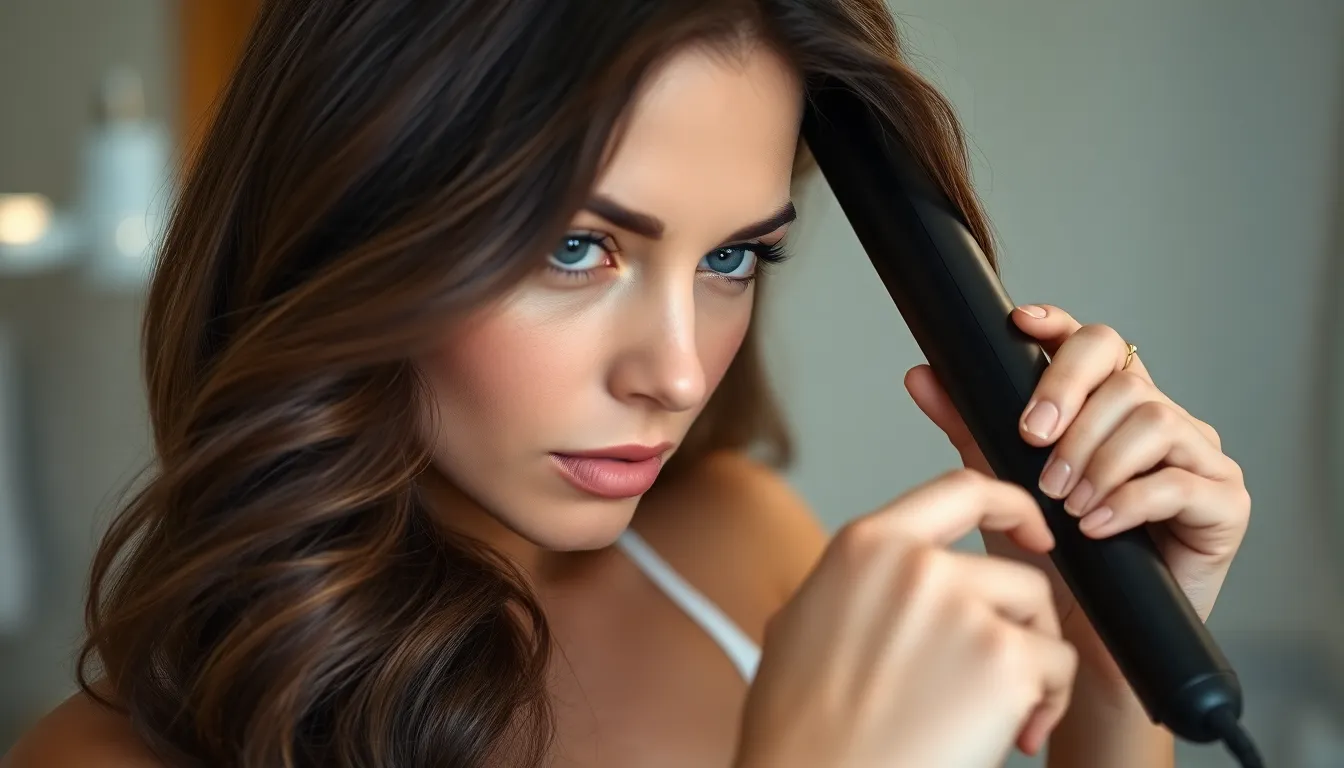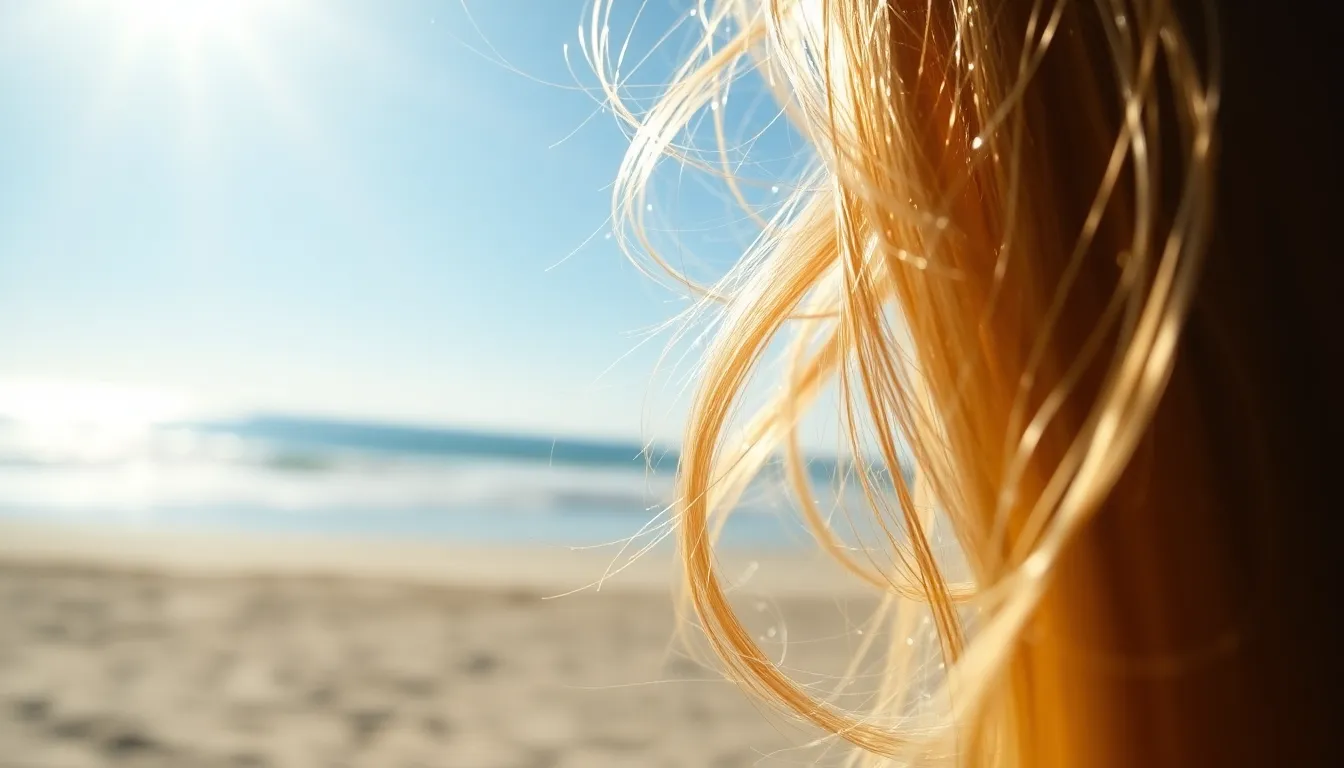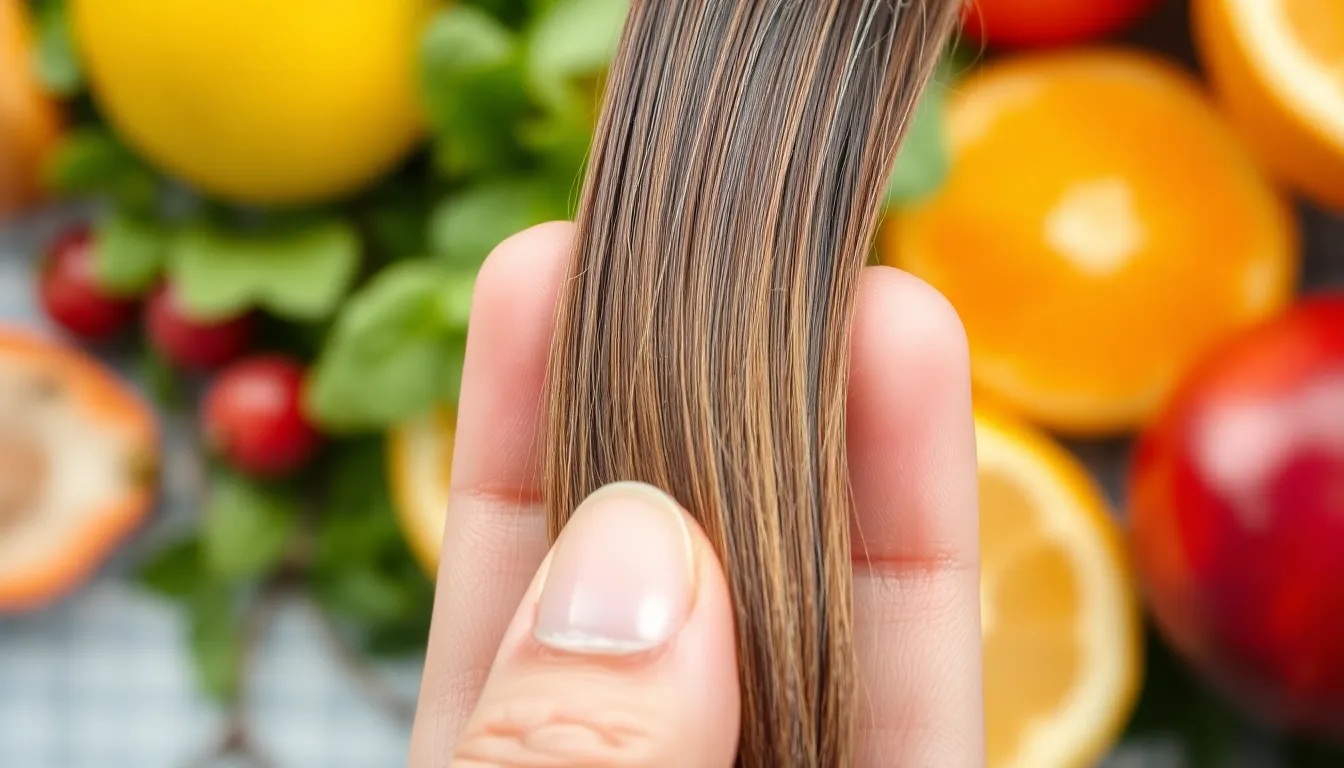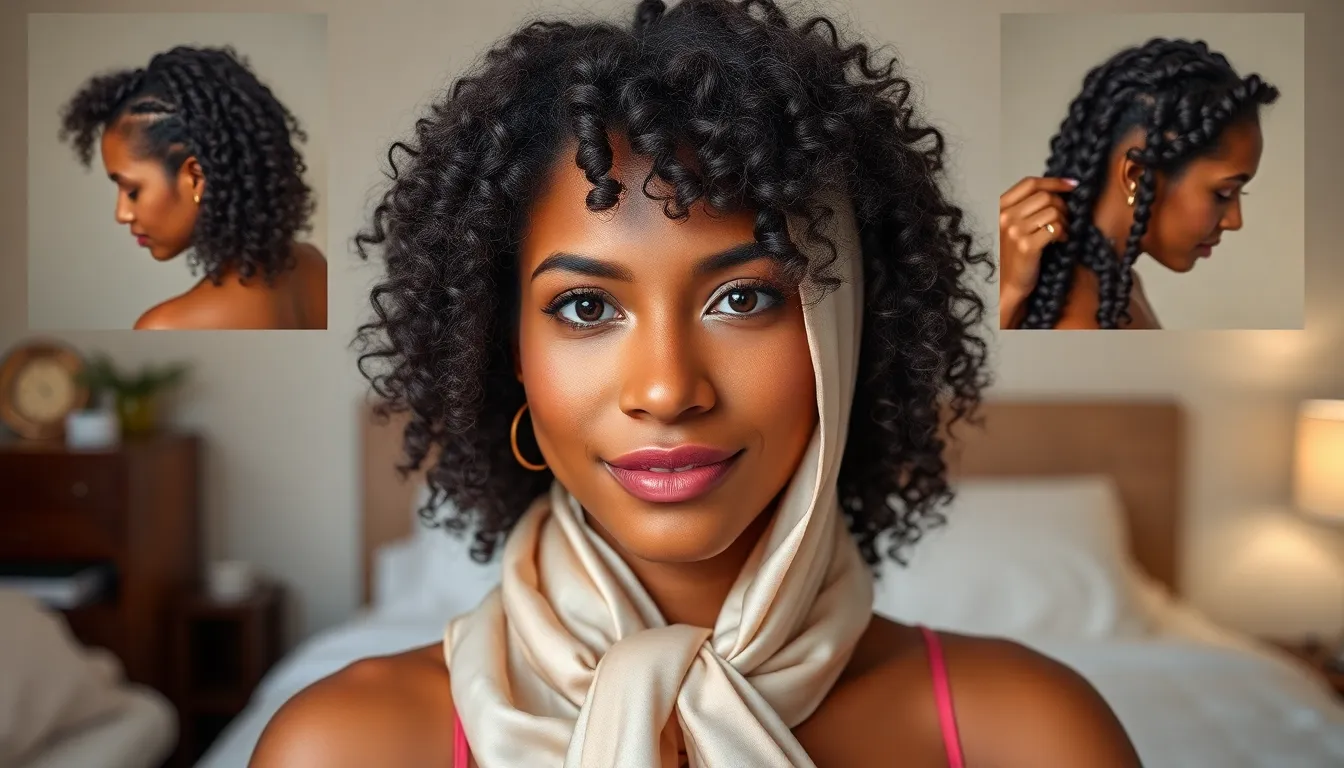We’ve all been there – running our fingers through our hair only to find broken strands scattered across our shoulders or stuck between our fingers. Hair breakage is one of the most frustrating beauty challenges we face, often leaving us with damaged ends, thinning sections, and hair that just won’t grow past a certain length.
The truth is, hair breakage isn’t just about bad genetics or aging. It’s typically the result of everyday habits and environmental factors that we can actually control. From aggressive brushing techniques to excessive heat styling, chemical processing, and even the way we sleep – countless factors contribute to weakening our hair’s structure.
Understanding the root causes of hair breakage is the first step toward healthier, stronger strands. When we identify what’s damaging our hair, we can take targeted action to prevent further breakage and promote optimal hair growth. Let’s jump into everything we need to know about protecting our precious locks.
Understanding Hair Breakage: What It Is and Why It Happens
Hair breakage occurs when the protective outer layer of our hair becomes weakened or damaged, causing strands to snap off rather than naturally shed from the root.
The Science Behind Hair Structure
Our hair consists of three distinct layers that work together to create strong, healthy strands. The outermost layer, called the cuticle, acts like overlapping shingles that protect the inner layers from environmental damage and moisture loss. Beneath the cuticle lies the cortex, which contains the proteins and pigments that give our hair its strength, elasticity, and color. The innermost medulla appears only in thick hair strands and contributes to the hair’s overall structure.
Protein bonds within the cortex determine our hair’s resilience and ability to withstand daily styling and environmental stressors. When these bonds become damaged through chemical processing, heat exposure, or mechanical stress, the hair shaft weakens significantly. Damaged cuticles lift and separate, creating rough texture and making hair more susceptible to further breakage.
Moisture balance plays a crucial role in maintaining hair structure integrity. Hair that lacks adequate moisture becomes brittle and prone to snapping, while overly moisturized hair can become mushy and stretch beyond its normal capacity.
Common Signs of Hair Breakage vs. Normal Shedding
Identifying hair breakage requires understanding the key differences between broken strands and naturally shed hair. Broken hair appears as short pieces of varying lengths throughout your hair, often with blunt or jagged ends where the strand snapped. These pieces typically lack the white bulb at the root that characterizes naturally shed hair.
Normal shedding involves complete strands that fall out from the root, displaying a small white bulb at one end. We naturally lose 50 to 100 hairs daily through this process, and these shed hairs usually match the full length of our hairstyle.
Visual indicators of hair breakage include:
- Short pieces scattered on pillows, brushes, or shoulders
- Uneven hair lengths throughout the same sections
- Rough, frayed ends that feel coarse to the touch
- Increased tangles and knots during styling
- Hair that appears thinner even though normal shedding patterns
Split ends represent another form of breakage where the hair shaft literally splits into two or more pieces. These damaged ends continue traveling up the hair shaft if left untreated, causing progressive weakening and eventual breakage at higher points.
Heat Styling Tools: The Leading Cause of Hair Breakage

Heat styling tools damage more hair than any other single factor we encounter in our daily routines. Studies show that temperatures above 300°F can cause immediate protein denaturation in hair strands, leading to weakened cuticles and increased breakage rates.
Blow Dryers and Excessive Heat Damage
Blow dryers expose our hair to concentrated heat that can reach temperatures of 140-180°F on high settings. This intense heat strips moisture from hair shafts within minutes, causing the protective cuticle layer to lift and crack. When we use blow dryers daily, the cumulative effect creates brittle strands that snap easily during brushing or styling.
Distance matters significantly when using blow dryers. Holding the tool less than 6 inches from our scalp increases heat exposure by up to 40%, according to trichology research. Air flow direction also affects damage levels – pointing the dryer downward helps smooth cuticles, while upward airflow roughens them and increases breakage potential.
Wet hair becomes particularly vulnerable to blow dryer damage because water molecules expand when heated. This expansion creates internal pressure that can crack hair shafts from the inside out, leading to microscopic fractures that weaken overall strand integrity.
Flat Irons and Curling Tools: Hidden Dangers
Flat irons create direct contact heat that can exceed 450°F, making them the most damaging styling tools in our arsenal. These high temperatures literally cook protein bonds in our hair, causing permanent structural damage that cannot be reversed. Single passes with flat irons set above 350°F can reduce hair strength by up to 25%.
Curling irons pose similar risks through prolonged heat exposure combined with mechanical tension. Wrapping hair around heated barrels creates stress points where strands are most likely to break. The combination of heat and pulling force multiplies damage potential, especially when we hold sections on the iron for more than 8-10 seconds.
Steam formation occurs when we use these tools on damp or product-laden hair. This steam creates rapid temperature fluctuations that shock hair fibers, causing them to expand and contract quickly. Such thermal shock leads to immediate cuticle damage and increased porosity that makes future breakage more likely.
Protective Heat Settings and Temperature Guidelines
Temperature selection directly correlates with breakage prevention – lower settings preserve hair integrity while still achieving desired styles. Fine or chemically treated hair should never exceed 300°F, while thick or coarse hair can tolerate up to 350°F safely. Going beyond these thresholds guarantees some level of structural damage.
| Hair Type | Maximum Safe Temperature | Recommended Setting |
|---|---|---|
| Fine/Damaged | 250-300°F | Low to Medium |
| Normal/Healthy | 300-350°F | Medium |
| Thick/Coarse | 350-400°F | Medium to High |
| Chemically Treated | 200-280°F | Low |
Heat protectant products create a barrier layer that absorbs some thermal energy before it reaches our hair shafts. These products can reduce heat damage by 20-50% when applied correctly to damp hair before styling. Silicone-based protectants work most effectively because they form a protective coating that doesn’t evaporate under high temperatures.
Timing becomes crucial for minimizing heat damage during styling sessions. Limiting each section to 2-3 passes with flat irons and keeping curling iron contact under 10 seconds prevents excessive thermal exposure. Taking breaks between sections allows our hair to cool down and recover before additional heat application.
Chemical Treatments That Weaken Hair and Cause Breakage

Chemical treatments rank among the most damaging processes our hair can endure. Professional and at-home chemical services alter hair’s natural structure, often leading to important weakening and breakage patterns.
Hair Coloring and Bleaching Effects
Bleaching strips away hair’s natural melanin pigments while simultaneously destroying protective protein bonds. Ammonia and hydrogen peroxide work together to lift the hair cuticle and penetrate deep into the cortex, causing irreversible structural damage. Studies show that bleached hair loses up to 50% of its original strength after a single lightening session.
Permanent hair dyes contain similar harsh chemicals that compromise hair integrity. Para-phenylenediamine (PPD) and other oxidative agents create permanent color changes by swelling the hair shaft and depositing color molecules. This process weakens the cuticle layer and reduces hair’s natural elasticity by approximately 25-30%.
Repeated coloring sessions create cumulative damage that compounds over time. Each application further deteriorates the hair’s protein matrix, leading to increased porosity and moisture loss. Hair that’s been colored multiple times becomes more susceptible to environmental damage and mechanical stress.
Relaxers and Perms: Chemical Processing Risks
Chemical relaxers use sodium hydroxide or calcium hydroxide to permanently break disulfide bonds in hair. These alkaline answers reach pH levels of 12-14, which literally reshape the hair’s internal structure to create straight textures. The process weakens hair by up to 75% compared to untreated strands.
Perming answers employ ammonium thioglycolate to restructure hair bonds for permanent waves. This chemical process involves two stages: breaking existing bonds with reducing agents, then reforming them with oxidizing answers. Hair treated with perming chemicals shows increased brittleness and reduced tensile strength for months afterward.
Both relaxers and perms require precise timing and neutralization to prevent severe damage. Over-processing occurs when chemicals remain on hair too long or when neutralizing steps aren’t performed correctly. This can result in immediate breakage, chemical burns to the scalp, and long-term hair weakness.
Over-Processing and Cumulative Damage
Multiple chemical treatments within short timeframes create catastrophic hair damage. Combining coloring with relaxing or perming within 6-8 weeks doesn’t allow hair sufficient recovery time. The overlapping chemical processes can dissolve up to 90% of hair’s structural proteins.
Professional colorists recommend waiting 2-3 weeks between major chemical services. This recovery period allows the hair cuticle to close and protein bonds to stabilize. But, severely damaged hair may require 6-8 weeks or longer before it can safely undergo additional processing.
Deep conditioning treatments become essential for chemically processed hair maintenance. Protein treatments help rebuild damaged bonds, while moisturizing masks restore hydration balance. Without proper care, chemically treated hair continues deteriorating at accelerated rates, leading to breakage patterns that worsen over time.
Poor Hair Care Habits That Lead to Breakage

We often overlook daily habits that silently contribute to hair damage and breakage. These seemingly innocent practices can accumulate over time and significantly weaken our hair strands.
Aggressive Brushing and Combing Techniques
Forceful detangling ranks among the most damaging habits we practice daily on our hair. We create micro-tears in the hair shaft when we yank through knots and tangles with excessive force. Brushing wet hair proves particularly destructive since moisture makes strands up to 30% more elastic and vulnerable to stretching beyond their breaking point.
Starting at the roots when detangling leads to pushing knots downward and creating larger tangles that require even more force to remove. We should always begin detangling from the ends and work our way up toward the scalp in small sections. This technique distributes tension more evenly across the hair shaft.
Using the wrong brush type for our hair texture amplifies damage during styling sessions. Metal bristles can scratch and tear the cuticle layer while plastic bristles create static that leads to more tangling. Wide-tooth combs work best for wet hair while boar bristle brushes distribute natural oils effectively on dry hair.
Brushing too frequently throughout the day overstimulates the scalp and can lead to mechanical damage from repetitive friction. We recommend limiting brushing to twice daily for most hair types unless exact styling needs require additional sessions.
Sleeping Without Hair Protection
Cotton pillowcases create important friction against our hair strands throughout the night as we toss and turn. This abrasive surface catches and pulls at individual hairs leading to breakage at the most vulnerable points. Studies show that cotton can absorb up to 27% of its weight in moisture from our hair while we sleep.
Loose hair during sleep allows strands to tangle and knot as we move unconsciously throughout the night. We experience increased breakage when these knots are forcefully removed during morning styling routines. Long hair particularly suffers from this overnight tangling without proper containment.
Silk or satin pillowcases reduce friction by up to 43% compared to standard cotton cases according to textile research. These smoother surfaces allow hair to glide more easily and retain moisture more effectively overnight. Alternatively we can use silk scarves or bonnets to create the same protective barrier.
Protective hairstyles like loose braids or silk scrunchies prevent hair from moving freely and creating tangles during sleep. We avoid tight elastic bands that can create dents and weak spots in our hair shafts. These gentle containment methods maintain our hair’s position without applying excessive tension.
Using the Wrong Hair Products for Your Hair Type
Protein overload occurs when we use too many strengthening products on hair that’s already healthy or low in porosity. This imbalance makes strands rigid and prone to snapping since they lose their natural flexibility. We can identify protein overload through hair that feels straw-like or breaks easily during styling.
Heavy products on fine hair weigh down delicate strands and can lead to breakage from the roots due to excessive pulling force. Thick creams and oils designed for coarse hair types overwhelm fine hair’s limited capacity to support additional weight. We should opt for lightweight serums and leave-in treatments specifically formulated for our hair density.
Sulfates in shampoos strip natural oils excessively from dry or chemically treated hair types that already struggle with moisture retention. These harsh detergents can remove up to 80% of sebum from the hair shaft leaving it vulnerable to environmental damage. We benefit from sulfate-free formulas that cleanse more gently.
pH imbalanced products disrupt our hair’s natural acidity level of 4.5 to 5.5 causing the cuticle layer to swell and become more fragile. Alkaline products with pH levels above 7 lift the cuticle scales making hair more susceptible to mechanical damage during styling. We should choose products specifically formulated to maintain optimal pH balance for hair health.
Environmental Factors Contributing to Hair Breakage

Beyond our daily hair care routines and chemical treatments, external environmental elements play a important role in weakening hair strands and accelerating breakage.
Sun Exposure and UV Damage
Ultraviolet rays from the sun damage hair in ways similar to how they affect our skin, breaking down protein structures and fading natural pigments. We often underestimate the cumulative effect of daily UV exposure on our hair’s health.
Direct protein degradation occurs when UV radiation penetrates the hair shaft and destroys amino acid bonds in the cortex. Studies show that prolonged sun exposure can reduce hair strength by up to 25% over a summer season.
Color loss and structural changes happen as UV rays break down melanin pigments, causing natural hair colors to fade and become brassy. Chemically treated hair faces even greater vulnerability, with bleached or colored strands showing damage signs after just 2-3 hours of direct sunlight.
Cuticle deterioration results from repeated UV exposure, creating a rough, porous surface that catches on other strands and leads to increased tangling. We notice this damage most in hair that regularly faces sun without protection.
Moisture depletion accelerates under UV rays, making hair brittle and prone to snapping. Hair exposed to intense sunlight can lose up to 30% of its moisture content in a single day at the beach or pool.
Pollution and Hard Water Effects
Environmental pollutants and mineral-heavy water create a double burden on our hair, depositing harmful substances while stripping away natural protective oils.
Airborne particle buildup occurs when dust, smog, and chemical pollutants settle on hair strands throughout the day. These microscopic particles create a film that weighs down hair and makes it more susceptible to breakage during styling.
Hard water mineral deposits form when calcium and magnesium ions bind to hair proteins, creating a coating that prevents moisture absorption. We see this effect most clearly in areas with water containing over 120 mg/L of dissolved minerals.
Product ineffectiveness increases in polluted environments and hard water areas, as buildup prevents shampoos and conditioners from properly cleansing and nourishing hair. Regular products may lose up to 40% of their effectiveness in heavily polluted urban environments.
Scalp irritation and inflammation develop from prolonged exposure to environmental toxins, affecting the health of new hair growth. Pollutants can clog hair follicles and disrupt the natural oil production that keeps hair flexible.
Seasonal Changes and Their Impact
Weather fluctuations throughout the year create varying stress conditions that directly affect hair strength and moisture levels.
Winter dryness and indoor heating strip moisture from hair at accelerated rates, with indoor humidity levels often dropping below 20% during heating season. Cold outdoor temperatures combined with hot indoor air create extreme moisture loss that makes hair brittle and prone to static electricity.
Summer heat and humidity swings cause hair to expand and contract repeatedly, weakening the internal structure. High temperatures above 85°F combined with humidity levels over 60% can cause hair to swell and become more fragile.
Spring allergen exposure affects scalp health through increased inflammatory responses, potentially disrupting normal hair growth cycles. Pollen and other airborne allergens can accumulate on hair and scalp, causing irritation that weakens hair at the root.
Fall temperature drops shock hair that’s been exposed to summer damage, often revealing breakage that occurred during warmer months. The transition from humid to dry conditions can cause previously damaged hair to snap more readily as moisture levels plummet.
Nutritional Deficiencies That Cause Weak, Brittle Hair

Beyond external factors, what we eat directly impacts our hair’s ability to resist breakage. Nutrient deficiencies create weak spots in hair strands that snap under minimal stress.
Essential Vitamins for Hair Strength
Biotin deficiency compromises keratin production, the primary protein that gives hair its structural integrity. Adults need 30 micrograms daily, yet many consume less than 20 micrograms through diet alone. Foods like eggs, nuts, and leafy greens provide biotin, but deficiencies show up as brittle strands that break easily during styling.
Iron shortage affects oxygen delivery to hair follicles, weakening strand formation from the root. Women require 18 milligrams daily, while men need 8 milligrams. Red meat, spinach, and lentils supply iron, though low levels cause hair to become fragile and prone to snapping.
Vitamin D plays a crucial role in hair follicle health, with deficiencies linked to increased breakage rates. Research shows that 42% of adults have insufficient vitamin D levels below 20 ng/mL. Fatty fish, fortified foods, and sunlight exposure help maintain adequate levels of 600-800 IU daily.
Vitamin C supports collagen production and iron absorption, both essential for strong hair structure. Daily requirements reach 75-90 milligrams for adults, easily met through citrus fruits, berries, and bell peppers. Deficiency symptoms include dry, splitting hair that breaks during gentle handling.
Protein Deficiency and Hair Health
Hair consists of 95% protein, making adequate protein intake critical for preventing breakage. Adults need 0.8 grams per kilogram of body weight daily, yet many consume insufficient amounts during restrictive dieting phases.
Complete proteins containing all nine essential amino acids build the strongest hair strands. Animal sources like chicken, fish, and dairy provide complete amino acid profiles, while plant combinations such as rice and beans create complete proteins for vegetarian diets.
Keratin production slows dramatically when protein intake drops below recommended levels for more than 2-3 months. Hair enters a resting phase where existing strands become increasingly fragile, leading to widespread breakage during washing and styling.
Timing matters for protein absorption, with spreading intake across meals improving utilization rates. Consuming 20-30 grams per meal optimizes amino acid availability for hair follicle repair and new strand formation.
Hydration and Its Role in Preventing Breakage
Water intake directly affects hair moisture content and flexibility, with dehydrated strands becoming brittle and snap prone. Adults need 8-10 glasses daily, though individual requirements vary based on activity levels and climate conditions.
Cellular hydration impacts the hair shaft’s ability to maintain elasticity during manipulation. Dehydrated hair loses its natural stretch capacity, causing strands to break when bent or twisted during styling routines.
Internal moisture contributes more to hair health than topical treatments, with proper hydration supporting natural oil production along the scalp. Adequate water consumption helps transport nutrients to hair follicles while removing waste products that can weaken strand structure.
Electrolyte balance affects how efficiently cells retain moisture, with sodium, potassium, and magnesium working together to maintain optimal hydration levels. Foods like bananas, avocados, and coconut water provide essential electrolytes that support healthy hair moisture retention.
Protective Styling Methods to Prevent Hair Breakage

Beyond addressing environmental factors and nutritional deficiencies, implementing proper protective styling techniques creates a crucial barrier against mechanical damage that leads to breakage.
Low-Manipulation Hairstyles
Braided styles offer excellent protection by keeping hair strands secured and reducing daily handling that can cause friction damage. French braids, Dutch braids, and simple three-strand plaits distribute tension evenly across the scalp while preventing tangling throughout the day.
Twisted updos minimize breakage by eliminating the need for frequent brushing and restyling that weakens hair cuticles. Low buns, twisted chignons, and rope twists keep hair ends tucked away from environmental damage while reducing mechanical stress on individual strands.
Protective wraps preserve hair integrity during daily activities by creating a smooth surface that prevents snagging on clothing and accessories. Silk scarves, satin bonnets, and hair wraps shield strands from friction while maintaining moisture levels that keep hair flexible and strong.
Loose ponytails reduce tension breakage when positioned at varying heights to prevent concentrated stress on exact areas of the scalp. We recommend using fabric-covered elastics rather than rubber bands, which can cut into hair shafts and cause immediate damage at the point of contact.
Proper Sectioning and Gentle Handling
Strategic sectioning prevents overstretching by dividing hair into manageable portions that reduce the force needed during styling and detangling processes. Working with 1-2 inch sections allows for thorough care without placing excessive tension on individual strands.
Gentle finger detangling minimizes mechanical damage compared to aggressive brushing that can tear through knots and weaken protein bonds. Starting from the ends and working upward prevents the accumulation of tangles that require forceful removal techniques.
Wide-tooth combs distribute pressure evenly across hair strands, reducing the concentrated force that causes breakage at weak points along the hair shaft. Metal combs should be avoided as they can create static electricity that leads to increased friction and damage.
Wet hair requires extra caution since water swells the hair cuticle and makes strands up to 30% more vulnerable to breakage. We recommend applying leave-in conditioner before detangling to create slip that reduces friction between strands and styling tools.
Overnight Protection Techniques
Silk pillowcases reduce friction damage by providing a smooth surface that allows hair to glide rather than catch and pull during sleep movements. Unlike cotton, silk maintains hair’s natural moisture levels and prevents the absorption of oils that keep strands supple.
Satin bonnets create a protective barrier that shields hair from rubbing against bedding materials that can cause tangles and breakage. These caps trap moisture close to the scalp while preventing environmental factors from drying out hair during the 6-8 hours of sleep.
Loose braids prevent overnight tangling without creating tight tension that can cause breakage at the hairline or nape. A single loose plait or two side braids keep hair organized while allowing natural movement that doesn’t stress the hair shaft.
Pineapple technique preserves curl patterns by gathering hair loosely at the very top of the head using a silk scrunchie. This method keeps curls and waves from flattening against the pillow while preventing the crushing that leads to frizz and potential breakage points.
Hair Care Products That Combat and Prevent Breakage

Selecting the right hair care products forms the foundation of any effective breakage prevention strategy. We’ll explore the most impactful product categories that can transform damaged, brittle strands into stronger, more resilient hair.
Deep Conditioning Treatments and Masks
Deep conditioning treatments penetrate the hair shaft to replenish moisture and restore damaged cuticles. We recommend applying these intensive treatments weekly to hair that’s been compromised by heat styling or chemical processing.
Professional grade masks containing ceramides and natural oils like argan or coconut oil deliver the most dramatic results. These formulations rebuild the hair’s protective barrier while sealing moisture deep within the cortex layer.
Weekly treatments work best when left on damp hair for 15-20 minutes under a shower cap. Heat from your scalp activates the conditioning agents, allowing them to penetrate more effectively than surface conditioners.
Overnight masks offer another powerful option for severely damaged hair. These ultra-rich formulas continue working while you sleep, providing extended repair time that regular rinse-out conditioners simply can’t match.
| Treatment Type | Application Time | Best For |
|---|---|---|
| Weekly Deep Mask | 15-20 minutes | Heat damaged hair |
| Overnight Treatment | 6-8 hours | Severely damaged strands |
| Protein Rich Mask | 10-15 minutes | Chemically processed hair |
| Moisture Mask | 20-30 minutes | Dry, brittle hair |
Protein Treatments for Damaged Hair
Protein treatments rebuild the structural integrity of hair that’s been weakened by chemical processing or excessive heat exposure. We find these treatments most effective when used every 2-3 weeks, as overuse can actually make hair more brittle.
Hydrolyzed proteins like keratin, collagen, and wheat protein are small enough to penetrate the hair shaft and fill in gaps where damage has occurred. These molecules literally patch holes in the cortex layer, restoring strength and elasticity to compromised strands.
Light protein treatments work well for fine or moderately damaged hair, while heavy duty formulas containing larger protein molecules suit severely compromised strands. Watch for signs like improved elasticity and reduced breakage to gauge whether your hair needs more or less protein.
Balance remains crucial with protein treatments, as hair needs both protein and moisture to maintain optimal health. Alternating protein treatments with deep conditioning masks prevents protein overload while addressing both structural and moisture needs.
Leave-In Conditioners and Protective Serums
Leave-in conditioners create a protective film around each hair strand that shields against environmental damage and reduces friction during styling. We apply these products to damp hair before blow drying or air drying for maximum protection.
Lightweight formulas work best for fine hair types, while thicker, cream based leave-ins suit coarse or damaged hair that needs extra moisture. Look for ingredients like dimethicone, which forms a protective barrier, or natural oils that penetrate the hair shaft.
Heat protectant serums become essential when using styling tools above 250°F, as they create a buffer between your hair and damaging temperatures. These specialized formulas contain silicones and proteins that can withstand high heat while maintaining hair flexibility.
Multi-purpose protective serums address several concerns simultaneously, offering UV protection, heat shielding, and moisture retention in one product. We recommend these streamlined options for daily use, especially during summer months when environmental stressors peak.
Daily application of leave-in products significantly reduces mechanical breakage from brushing and styling. These protective barriers allow hair tools to glide more smoothly through strands, preventing the snapping and tearing that leads to visible breakage.
Professional Treatments for Severe Hair Breakage

When home remedies aren’t delivering the results you need, professional treatments become essential for addressing severe hair breakage. These advanced interventions can restore damaged strands and prevent future breakage more effectively than over-the-counter answers.
Salon Deep Conditioning Services
Professional deep conditioning treatments penetrate much deeper into the hair shaft than at-home masks, delivering concentrated moisture and nutrients where they’re needed most. We recommend scheduling these services every 4-6 weeks for severely damaged hair, as salon-grade products contain higher concentrations of active ingredients like hydrolyzed proteins and ceramides.
Steam treatments enhance the conditioning process by opening the hair cuticle, allowing therapeutic ingredients to reach the cortex layer more effectively. Many salons combine steam with infrared heat therapy, which can increase ingredient absorption by up to 40% compared to traditional conditioning methods.
Olaplex treatments specifically target and rebuild broken disulfide bonds within the hair structure, reversing damage from chemical processing and heat styling. This molecular repair system works at the deepest level of hair structure, making it particularly effective for hair that’s been compromised by multiple chemical treatments or excessive heat exposure.
Customized protein treatments balance your hair’s exact moisture and protein needs through professional analysis of your hair’s porosity and damage level. Salon professionals can determine whether your hair requires light proteins for elasticity or heavy proteins for structural repair, preventing the protein overload that commonly occurs with DIY treatments.
Keratin Treatments and Their Benefits
Keratin treatments smooth the hair cuticle and fill in microscopic gaps where breakage typically begins, creating a protective barrier that reduces friction and environmental damage. These professional services can decrease breakage by up to 60% for 3-4 months, making them particularly beneficial for chemically processed or heat-damaged hair.
Brazilian keratin treatments and Japanese thermal reconditioning offer different approaches to hair repair and protection. While Brazilian treatments focus on sealing and smoothing damaged cuticles, thermal reconditioning permanently alters the hair’s internal structure to reduce breakage potential in naturally coarse or resistant hair types.
Formaldehyde-free keratin options provide similar protective benefits without the health concerns associated with traditional formulations. These safer alternatives use glyoxylic acid or other gentle crosslinking agents to achieve smoothing results while maintaining hair health and integrity.
Post-treatment care significantly impacts the longevity and effectiveness of keratin services, requiring sulfate-free products and reduced washing frequency for optimal results. We recommend waiting 72 hours before washing hair after treatment and using only pH-balanced, keratin-safe products to maintain the protective coating.
When to Consult a Trichologist
Trichologists provide specialized medical expertise when hair breakage persists even though consistent care routines and professional treatments. These certified hair and scalp specialists can identify underlying medical conditions, hormonal imbalances, or scalp disorders that contribute to chronic breakage patterns.
Microscopic hair analysis reveals structural damage invisible to the naked eye, including cuticle lifting, cortex exposure, and protein deficiencies that standard visual assessments might miss. This detailed examination helps create targeted treatment protocols based on your hair’s exact damage patterns and recovery potential.
Scalp health assessments often uncover hidden issues like seborrheic dermatitis, folliculitis, or circulation problems that directly impact hair strength and breakage resistance. Many clients discover that addressing scalp conditions resolves persistent breakage issues that seemed unrelated to scalp health.
Personalized treatment protocols combine professional-grade products with exact application techniques customized to your hair’s unique needs and lifestyle factors. Trichologists can prescribe specialized serums, supplements, or prescription treatments that aren’t available through standard salon services, providing more comprehensive answers for severe breakage cases.
Medical referrals become necessary when hair breakage indicates underlying health issues like thyroid disorders, autoimmune conditions, or severe nutritional deficiencies that require medical intervention alongside cosmetic treatments.
Daily Habits to Maintain Strong, Breakage-Free Hair

Building sustainable daily routines forms the foundation of hair breakage prevention. Our consistent approach to caring for hair throughout each day determines whether we strengthen or weaken our strands over time.
Gentle Washing and Conditioning Routines
Washing frequency matters significantly for hair breakage prevention. We recommend limiting shampoo sessions to 2-3 times per week for most hair types, as over-washing strips essential natural oils that protect hair strands. Dry or chemically processed hair benefits from even less frequent washing, sometimes only once per week.
Water temperature directly affects hair cuticle health. We suggest using lukewarm water rather than hot water, which opens cuticles excessively and leads to moisture loss. Cold water rinses at the end of washing sessions help seal cuticles and lock in moisture.
Shampoo application technique prevents unnecessary breakage. We focus shampoo primarily on the scalp rather than the hair lengths, allowing suds to cleanse the rest of our hair as we rinse. Gentle massaging motions with fingertips stimulate circulation without creating tangles that lead to breakage during washing.
Conditioning every wash session provides essential moisture protection. We apply conditioner from mid-length to ends, avoiding the scalp area where natural oils already provide protection. Leave-in time of 2-3 minutes allows proper penetration before rinsing thoroughly with cool water.
Deep conditioning treatments weekly restore damaged hair structure. We schedule these intensive treatments to rebuild protein bonds and replenish moisture levels that daily styling depletes. Professional-grade masks containing ceramides and natural oils penetrate deeper than regular conditioners.
Proper Towel Drying Techniques
Traditional towel rubbing causes immediate mechanical damage to wet hair. We avoid vigorous back-and-forth motions that create friction and tangles, which snap fragile wet strands. Cotton towels particularly rough up hair cuticles and increase breakage risk significantly.
Microfiber towels reduce friction during the drying process. We choose these smoother materials that absorb water without creating the harsh texture that damages hair cuticles. Microfiber towels cut drying time while minimizing mechanical stress on vulnerable wet hair.
Gentle pressing motions extract water without breakage. We squeeze hair sections gently within the towel rather than rubbing or twisting motions that stress hair bonds. Starting from the roots and working toward ends prevents stretching that weakens protein structures.
Hair wrapping techniques protect strands during initial drying. We wrap hair loosely in a microfiber towel or cotton t-shirt for 10-15 minutes, allowing natural absorption without manipulation. Tight wrapping creates tension that can snap weakened areas of damaged hair.
Air drying prevents heat damage from blow dryers. We allow hair to dry naturally whenever possible, reducing thermal stress that weakens protein bonds. When time constraints require blow drying, we ensure hair reaches 70-80% dryness through gentle towel techniques first.
Regular Trimming and Maintenance
Scheduled trims every 6-8 weeks prevent split ends from traveling up hair shafts. We maintain consistent appointments even when growing hair longer, as removing damaged ends actually promotes healthier growth. Split ends that aren’t trimmed continue splitting upward, causing more extensive damage.
Professional stylists identify damage we might miss at home. We rely on their trained eyes to spot weak areas, uneven growth patterns, and early signs of breakage that require attention. Regular professional assessments help us adjust our hair care routines before problems worsen.
Between-trim maintenance includes careful inspection of hair ends. We examine our hair weekly for signs of splitting, roughness, or breakage, addressing issues promptly with targeted treatments. Small scissors designed for hair allow us to remove individual split ends between professional appointments.
Protective styling during growth phases reduces daily manipulation. We incorporate low-maintenance styles like loose braids, buns, and twists that minimize handling while hair recovers from damage. These styles protect ends from friction against clothing and environmental exposure.
Scalp health maintenance supports strong hair growth from the roots. We massage our scalp regularly to stimulate blood circulation and distribute natural oils throughout hair lengths. Clean scalp conditions prevent buildup that can weaken hair follicles and compromise new growth strength.
Conclusion
Taking control of hair breakage requires a holistic approach that addresses multiple factors working together. From adjusting our daily styling routines to nourishing our bodies with proper nutrition we’ve learned that healthy hair starts from within and extends to every product we choose.
The key lies in consistency and patience. Small changes in how we handle our hair during washing gentle detangling techniques and protective styling can yield important improvements over time. Remember that severely damaged hair may need professional intervention but most breakage issues respond well to the strategies we’ve outlined.
Your hair’s unique needs deserve attention and care. By implementing these evidence-based practices and maintaining realistic expectations you’ll be well on your way to stronger more resilient hair that grows beautifully without the frustration of constant breakage.
Frequently Asked Questions
What is hair breakage and how is it different from normal hair shedding?
Hair breakage occurs when hair strands snap off at various points along the shaft due to weakened protein bonds, while normal shedding involves complete strands falling out naturally from the root. Breakage results in short, uneven pieces and rough ends, whereas shedding produces full-length strands with white bulbs at the root.
What are the main causes of hair breakage?
The primary causes include excessive heat styling (temperatures above 300°F), chemical treatments like coloring and relaxing, aggressive brushing techniques, poor hair care habits, environmental factors like UV exposure and pollution, and nutritional deficiencies. Daily habits such as sleeping on cotton pillowcases and using harsh products also contribute significantly.
How can I tell if my hair is breaking versus shedding normally?
Signs of breakage include finding short, uneven hair pieces, experiencing increased tangles, noticing rough or split ends, and observing thinning hair without seeing complete strands. Normal shedding involves losing 50-100 complete strands daily with white bulbs at the root, which is part of the natural hair growth cycle.
What temperature should I use when heat styling to prevent damage?
For fine or damaged hair, keep temperatures below 250°F. Medium-textured hair can handle 250-300°F, while thick, coarse hair can tolerate up to 350°F. Always use heat protectant products and avoid holding tools in one spot for more than 10 seconds to prevent protein denaturation and immediate damage.
How often should I wash my hair to prevent breakage?
Limit shampooing to 2-3 times per week to preserve natural oils that protect hair strands. Use lukewarm water instead of hot water to avoid stripping moisture and damaging cuticles. This frequency allows your scalp’s natural oils to nourish and strengthen your hair while maintaining cleanliness.
What nutrients are essential for preventing hair breakage?
Key nutrients include biotin for hair strength, iron for proper blood circulation to follicles, vitamin D for hair growth, vitamin C for collagen production, and adequate protein since hair is primarily composed of keratin. Proper hydration and electrolyte balance are also crucial for maintaining hair flexibility and preventing brittleness.
How can I protect my hair while sleeping?
Use silk or satin pillowcases to reduce friction and moisture loss. Consider wearing a silk or satin bonnet or scarf to further protect your hair. Try loose protective hairstyles like braids or buns to minimize tangling, and avoid tight elastics that can cause breakage points.
What ingredients should I look for in hair products to prevent breakage?
Look for ceramides, natural oils (argan, jojoba, coconut), proteins (keratin, silk proteins), and humectants (hyaluronic acid, glycerin). Avoid sulfates that strip natural oils, and ensure products maintain proper pH balance. Deep conditioning treatments with these ingredients help repair damaged cuticles and strengthen hair bonds.
How long should I wait between chemical treatments to prevent damage?
Wait at least 6-8 weeks between chemical services like coloring, bleaching, or relaxing to allow hair to recover. For multiple processes, space them even further apart. Always conduct strand tests and consider professional consultation to assess hair health before proceeding with additional chemical treatments.
When should I seek professional help for hair breakage?
Consult a trichologist or dermatologist if you experience severe, persistent breakage despite proper care, sudden hair loss, scalp irritation, or if breakage seems related to underlying health conditions. Professional treatments like keratin treatments, steam conditioning, and customized protein therapies may be necessary for severe cases.







